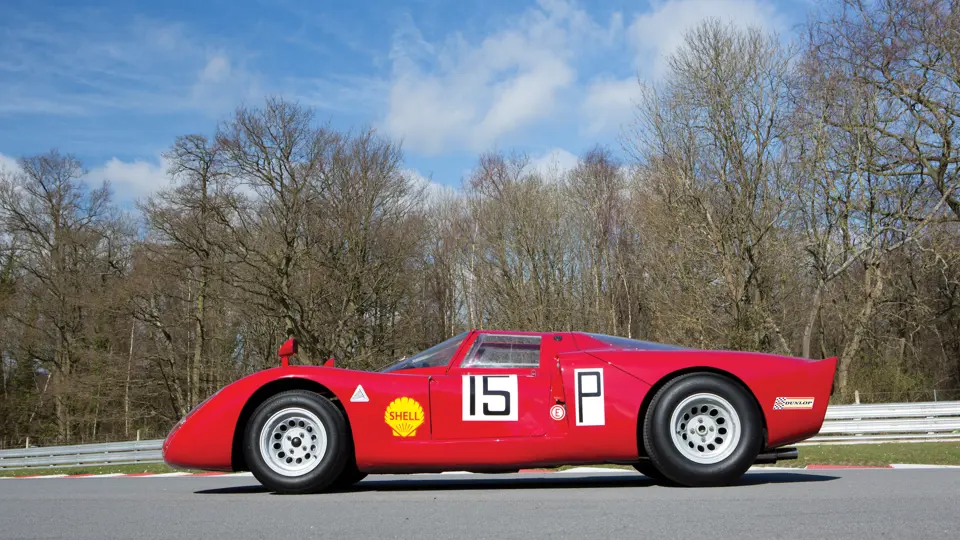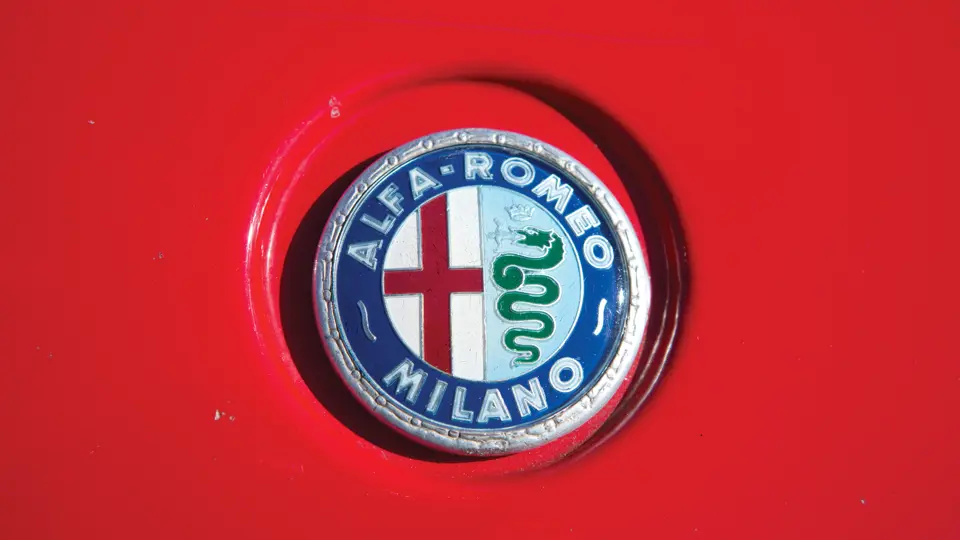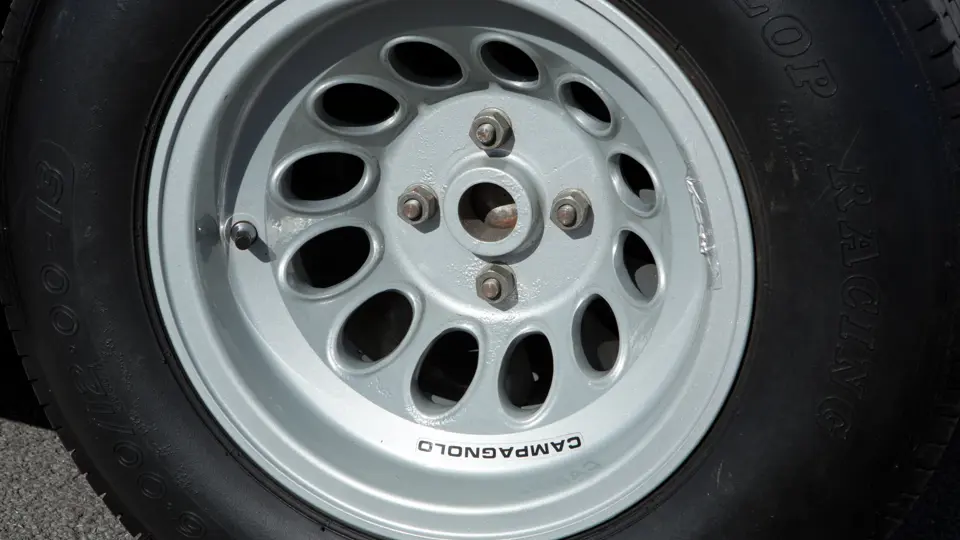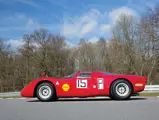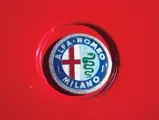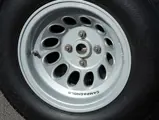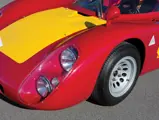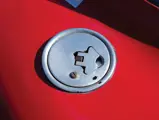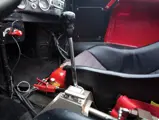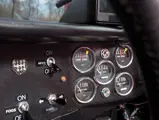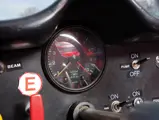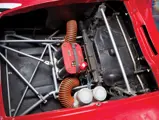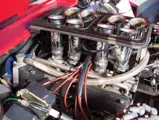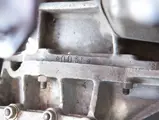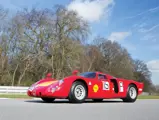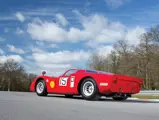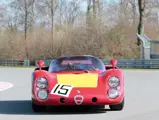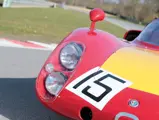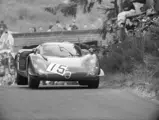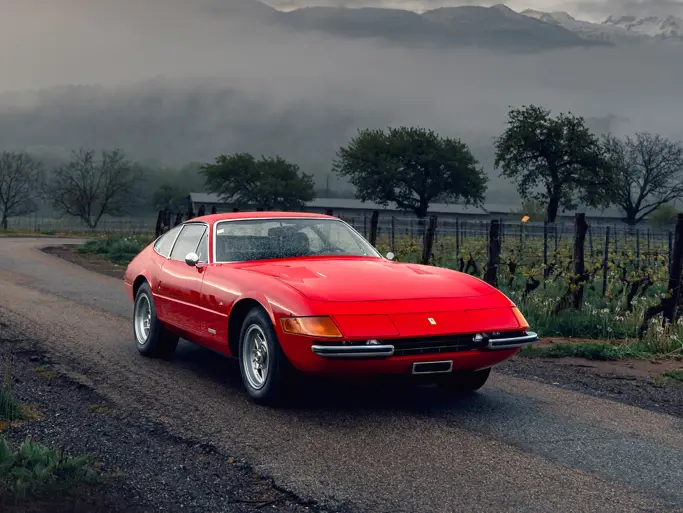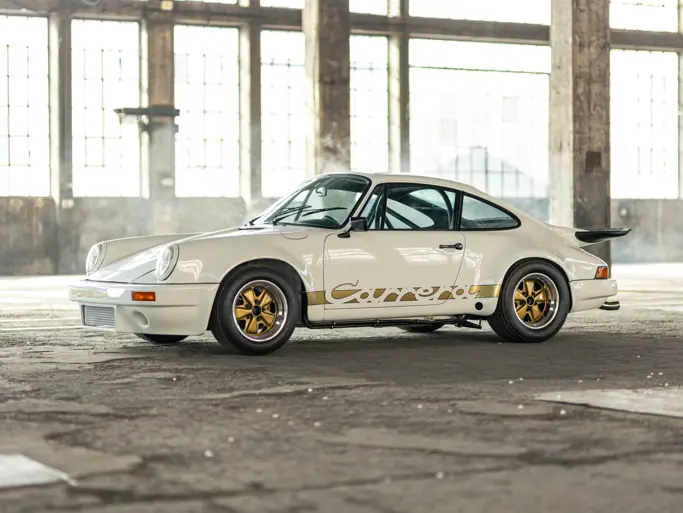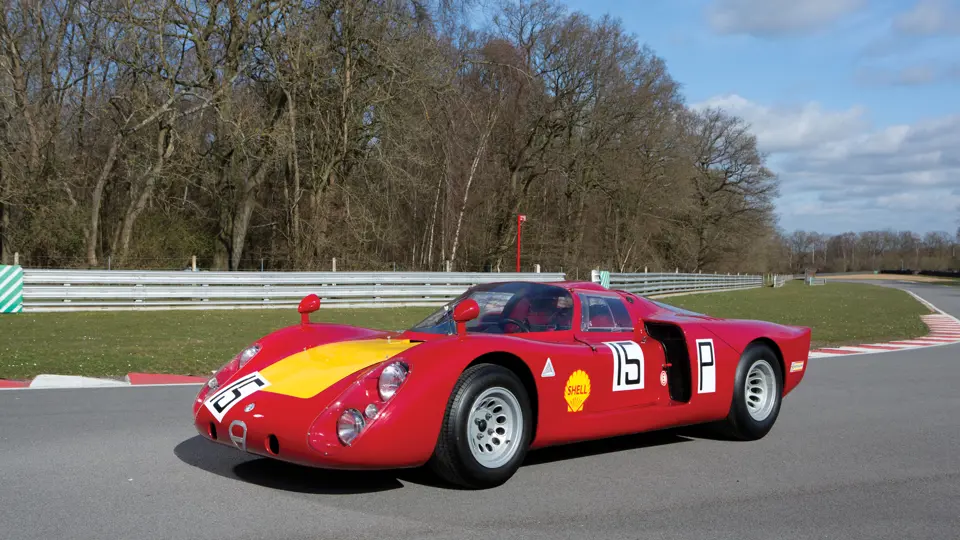
1968 Alfa Romeo Tipo 33/2 Daytona
{{lr.item.text}}
€1,260,000 EUR | Sold
{{bidding.lot.reserveStatusFormatted}}
- Raced in period by Nino Vaccarella, Herbert Schultze, and Michel Weber
- Eligible for many of the world’s greatest historic motor racing events
- Includes original registration documentation, its ONS Wagen-Pass, and FIA papers
- Beautiful example of the eight-cylinder Alfa Romeo sports prototype
- Pilotée à l'époque par Nino Vaccarella, Herbert Schultze et Michel Weber
- Éligible pour la plupart des plus beaux meetings historiques du monde
- Comporte ses documents d'immatriculation d'origine, son ONS Wagenpass et ses papiers FIA
- Superbe exemplaire du fameux sport-prototype Alfa Romeo V-8
270 bhp, 1,995 cc DOHC V-8 engine with dual-ignition and indirect fuel injection, six-speed gearbox, independent front and rear suspension by double wishbones, rear-wheel drive, and four-wheel disc brakes. Wheelbase 2,250 mm
Moteur V-8, 1 995 cm3, 270 ch, 2 ACT par banc, double allumage et injection indirecte, boîte six rapports, suspension avant et arrière indépendante à doubles triangles, propulsion, freins assistés à disques sur les quatre roues. Empattement: 2 250 mm.
By the end of 1951, Alfa Romeo had decided to retire from international grand prix competition. During the early 1950s, it would win the first two Driving Championships with its Tipo 158 and 159 racers, and in 1952 and 1953, the famed Disco Volante would astonish the world, as it had an entirely new design. At the same time, Alfa Romeo was developing an intriguing two-litre V-8 prototype engine that was intended for a sporting GT car; however, this project was shelved for the time being.
With Alfa Romeo and its competition arm, Autodelta, experiencing much success with the Giulia Coupé derivatives and the TZ and TZ2 throughout the early 1960s, in various touring and GT races, the decision was finally made to return to international sports car racing. The heart of Alfa’s return would be the two-litre V-8 engine, which had been abandoned 10 years earlier. This effort would encompass 11 racing seasons and result in Alfa winning the World Championship in 1977.
The 1967 Fleron Hill Climb event in Belgium would mark Alfa Romeo’s triumphant return. Their new car, which featured a rather exotic H-shape chassis made of magnesium and aluminium, would finish 1st overall in this event, at the hands of Teodoro Zeccoli. With years of competitive driving experience, Teo had also built up quite a reputation. As the Autodelta test driver, he was actively involved in the Tipo 33 project, as he had allegedly tested every T33 personally. He had also been an Abarth Works driver, as well as a respected Le Mans and hill climb veteran. After its success in Belgium, the Fleron name quickly became associated with this model.
Throughout 1967, Alfa Romeo won four victories, with three taking place in hill climbs and one at the Vallelunga circuit later in the year.
The car offered here was delivered new by Scuderia Autodelta in 1968, and it was campaigned by the Alfa Romeo Deutschland concessionaires team. Chassis 026’s first competitive outing was on 19 May, at the 1968 Nürburgring 1000 KM. The car was driven by Herbert Schultze and Nino Vaccarella, and it claimed an impressive 3rd in class and 10th overall finish. It went on to compete for the remainder of the 1968 season, with Herbert Schultze driving, at mostly European hill climb championship events.
On 17 April 1969, this car was first road-registered as F-RW 35 in Frankfurt. As noted by the original Fahrzeugbrief, which accompanies the car, it was equipped with engine 0035, which it still retains today. Throughout the 1969 season, Michel Weber competed with the car at 11 competitive events. Highlights of these events include wins at the Fassberg Hill Climb in May and the Gaisberg Hill Climb in September. Weber also competed at the famous Trento-Bondone, where he finished 3rd, and at the Mont Ventoux event in September, where he finished 8th in class. In 1970, Weber again competed with the car for Alfa Deutschland.
The car was then sold to racing driver Heinz Isert in 1971. On 21 July 1971, the ONS Wagen-Pass for motor racing in Germany was delivered, and it is still presented with the car to this day. As documented in the Wagen-Pass, Isert had a roll bar fitted in 1973. He finally sold the Alfa to Florian Gerbl in 1984, and after trading hands several times thereafter, a full restoration, which included returning the body to the original short-tail Daytona specification, was undertaken.
In 1998, Gregor Fisken bought chassis 026 and continued to compete in the car, including at the Targa Florio event in 2000. Its FIA papers appear to have been delivered on 19 December that year. Three years later, the car was sold to Kazumichi Goh, the founder of the Team Goh International motorsport team, which won the 1996 All-Japan Grand Touring Car Championship, and who famously went on to win Le Mans in 2004 with Audi. In August 2005, the FIA HTP papers were delivered. In 2008, the car was acquired by Mr Muroto in Japan, who retained the Alfa for several years before selling it to the present owner in 2010.
This car offers a rare opportunity to purchase a genuine T33/2 Daytona race car, especially an example with such an impressive racing record. It is currently road-registered and includes valid HTP-FIA papers, making it not only eligible for the Le Mans Classic but also the Tour Auto and Modena Cento Ore.
With its gorgeous, high-revving two-litre V-8, this Alfa Romeo will not only sound great running down the straights at any historic motor sport event, but it will also certainly beckon its new owner to push the limit at every turn.
A la fin de la saison 1951, Alfa Romeo décidait de se retirer des grand prix internationaux. Au début des années 1950, la marque avait remporté les deux premiers titres au Championnat du Monde avec ses monoplaces Tipo 158 et 159 et, en 1952 et 1953, la fameuse Disco Volante allait étonner le monde avec sa forme spectaculaire, complètement nouvelle. Parallèlement, Alfa Romeo préparait un nouveau moteur V-8 de 2 litres conçu pour équiper une GT sportive, mais ce projet était ensuite mis de côté.
Au début des années 1960, Alfa Romeo et son écurie de course Autodelta connaissaient de brillants succès avec les dérivés de coupés Giulia et les TZ et TZ2, en courses tourisme ou GT. Si bien que la décision était prise de retourner en compétition internationale d'endurance. Le cœur du nouveau prototype Alfa Romeo serait le V-8 de 2 litres qui avait été abandonné 10 ans auparavant. Ce moteur allait participer à 11 saisons de courses, et apporter à Alfa Romeo le titre de Championne du Monde des Voitures de Sport en 1977.
La course de côte de Fléron, en Belgique, était en 1967 le témoin du retour triomphant d'Alfa Romeo. La nouvelle voiture, équipée d'un châssis assez exotique en H, en magnésium et en aluminium, remportait la victoire entre les mains de Teodoro Zeccoli. Fort de nombreuses années d'expérience, Teo s'était bâti une solide réputation. En tant que pilote d'essai Autodelta, il était impliqué de façon active dans le projet Tipo 33 et avait sans doute testé personnellement chaque T33. Il avait été aussi pilote officiel Abarth et avait pris part aux 24 Heures du Mans et à de nombreuses courses de côte. Après son succès en Belgique, le nom de Fléron est resté associé à ce modèle.
Au cours de l'année 1967, Alfa Romeo remportait quatre victoires, dont trois lors de courses de côte et une sur le circuit de Vallelunga, plus tard dans l'année.
La voiture proposée ici a été livrée neuve en 1968 par la Scuderia Autodelta et a été engagée en course par l'équipe du concessionnaires Alfa Romeo Deutschland. La première sortie en compétition de ce châssis 026 a eu lieu le 19 mai 1968, aux 1000 Km du Nürburgring. La voiture était alors confiée à Herbert Schultze et Nino Vaccarella, qui ont signé une superbe troisième place dans leur catégorie, terminant dixièmes au classement général. La voiture a continué à courir jusqu'à la fin de la saison 1968 entre les mains d'Herbert Schultze, participant principalement à des courses de côte du championnat d'Europe.
Le 17 avril 1969, la voiture a été immatriculée pour la première fois, F-RW 35 à Francfort. Comme il est indiqué sur le Fahrzeugbrief d'origine, elle était alors dotée du moteur 0035, qui est encore celui qui l'équipe aujourd'hui. Au cours de la saison 1969, Michel Weber prenait part à 11 compétitions, remportant la victoire dans la course de côte de Fassberg en mai et dans celle de Gaisberg en septembre. Weber participait aussi au fameux Trento-Bondone, arrivant troisième, et à la course de côte du Mont Ventoux au mois de septembre où il s'adjugeait la huitième place de sa catégorie. En 1970, Weber courait à nouveau au volant de la voiture pour Alfa Deutschland.
En 1971, la voiture était vendue au pilote Heinz Isert. Le 21 juillet 1971 était délivré un ONS Wagenpass, pour pouvoir courir en Allemagne, et ce document fait aujourd'hui partie du dossier de la voiture. Comme il est indiqué dans ce Wagenpass, un arceau de sécurité a été posé par Isert en 1973. En 1984, il a vendu l'Alfa Romeo à Florian Gerbl et, après qu'elle ait changé de mains plusieurs fois, la voiture bénéficiait d'une restauration complète au cours de laquelle la carrosserie était remise en état selon sa configuration d'origine, Daytona à queue courte.
En 1998, Gregor Fisken en faisait l'acquisition et l'utilisait en compétition, participant en 2000 à la Targa Florio. Ses papiers FIA ont été délivrés le 19 décembre de cette même année. Trois ans plus tard, l'Alfa Romeo était vendue à Kazumichi Goh, fondateur de l'écurie de course Team Goh International qui a remporté le Championnat Super GT au Japon en 1996, et qui a décroché la victoire aux 24 Heures du Mans 2004 avec Audi. Au mois d'août 2005 était émis le Passeport Technique Historique FIA et, en 2008, la voiture était cédée à M. Muroto, au Japon, qui la conservait quelques années avant de la vendre en 2010 à son actuel propriétaire.
La voiture proposée ici représente une rare opportunité d'acquérir une authentique T33/2 Daytona de compétition, qui de plus présente un très beau palmarès. Elle est aujourd'hui immatriculée pour la route et comporte ses papiers FIA, ce qui la rend éligible pour Le Mans Classic, mais aussi pour le Tour Auto et pour Modena Cento Ore.
Avec son splendide et puissant moteur V-8 de 2 litres, cette Alfa Romeo non seulement émettra un son fabuleux dans les lignes droites de toute compétition historique, mais en plus elle encouragera son nouveau propriétaire à en exploiter au maximum toutes les capacités sportives.
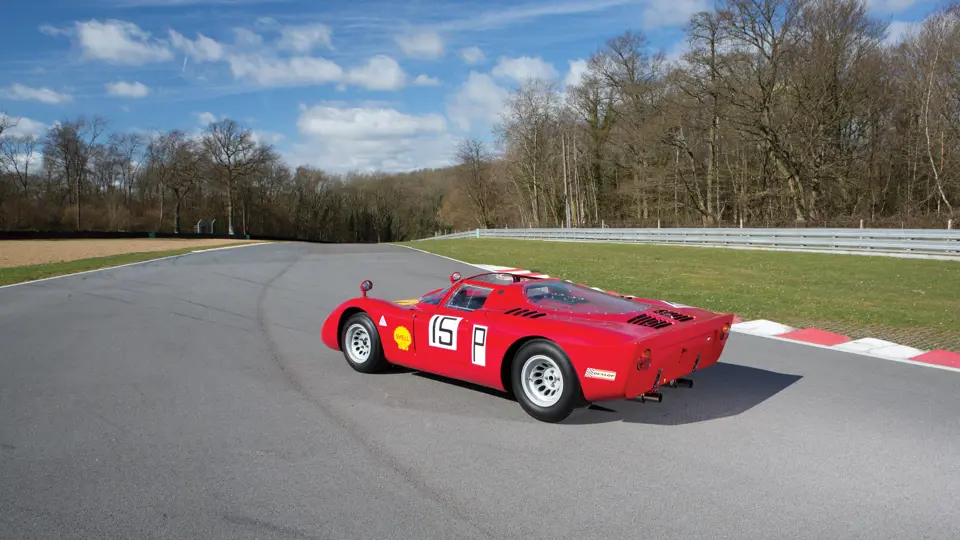



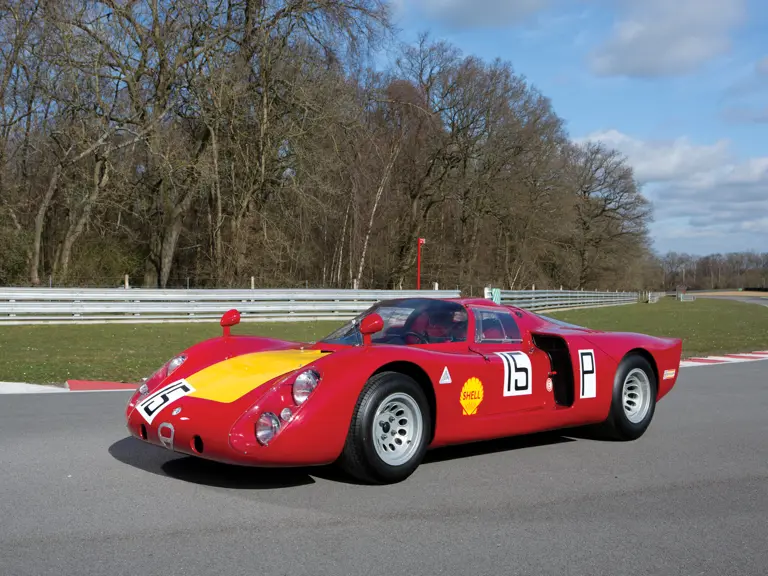
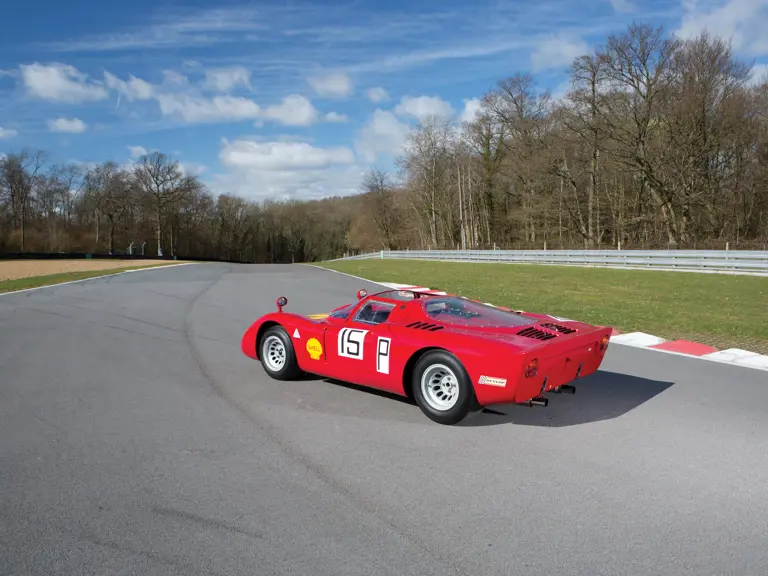
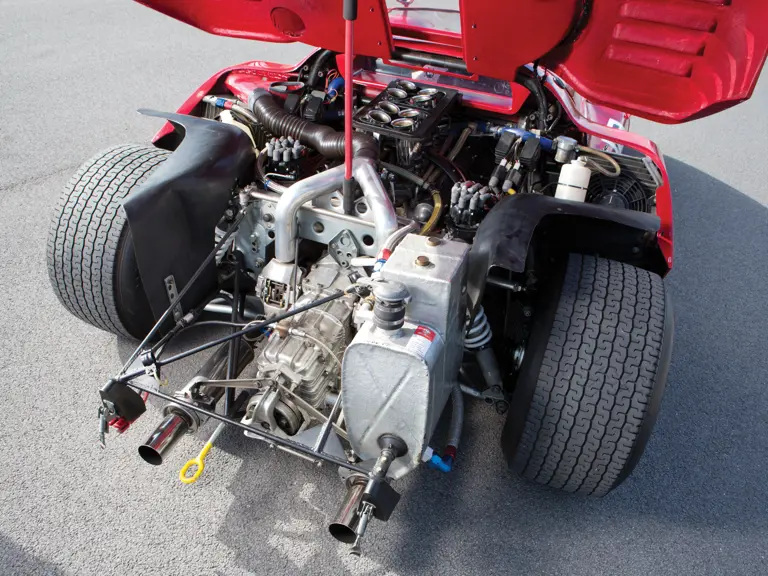



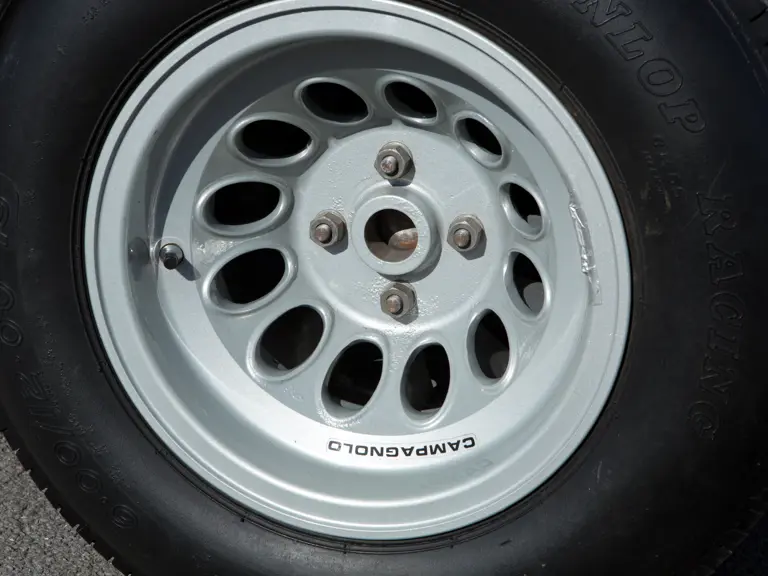
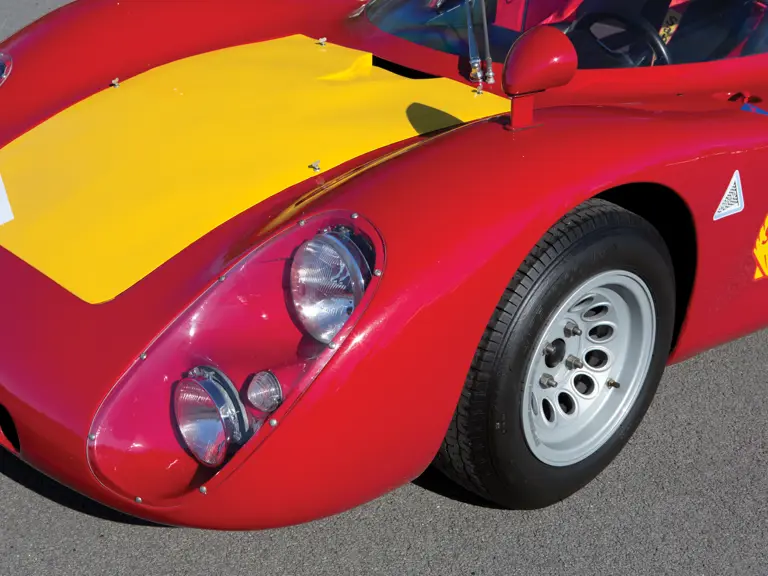
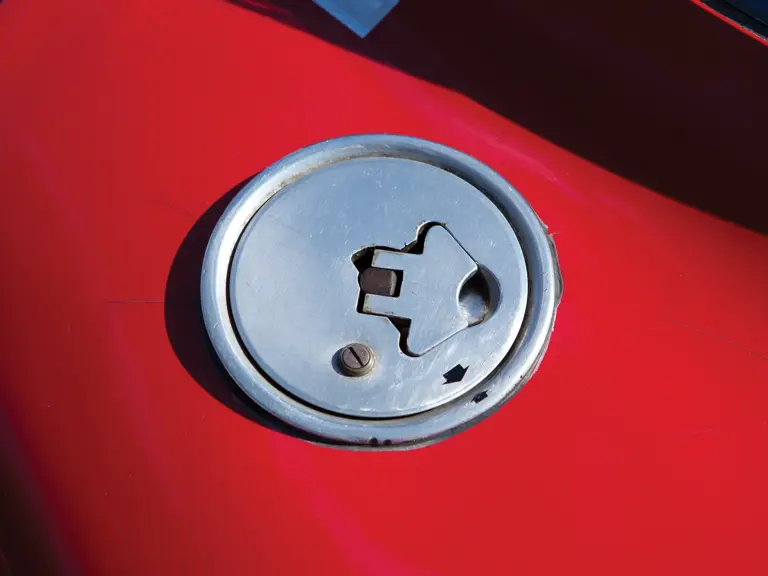
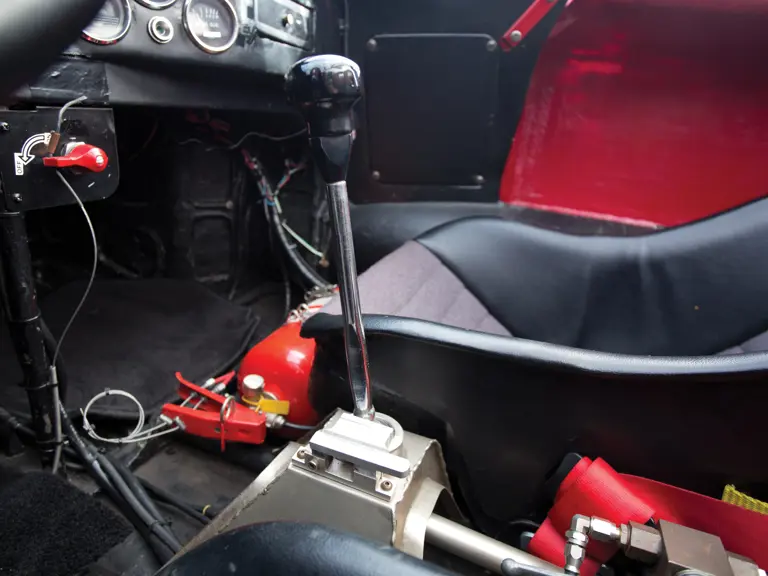
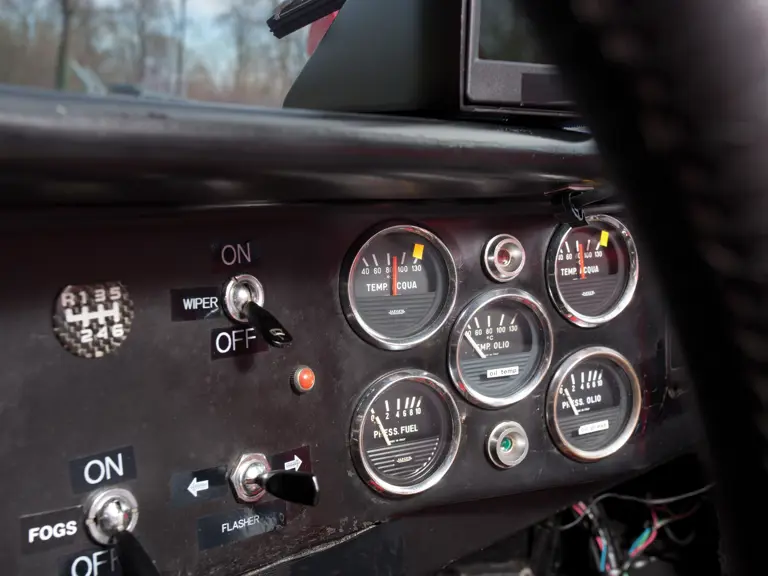
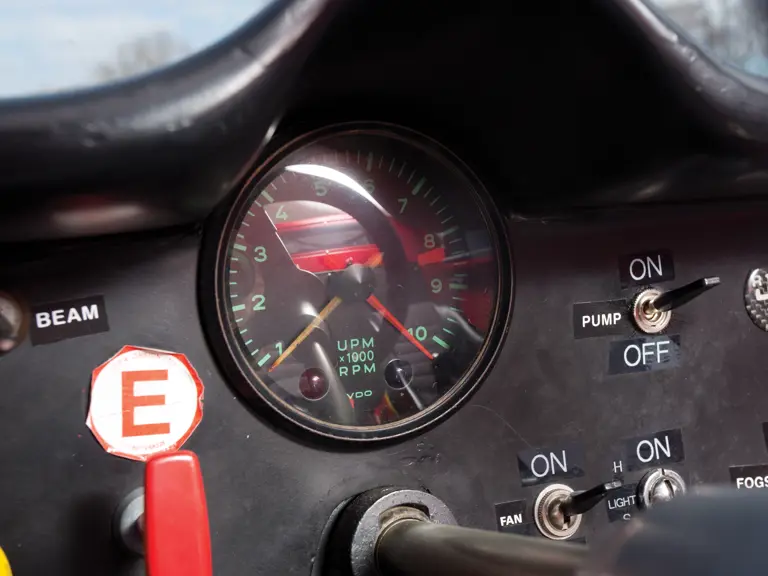



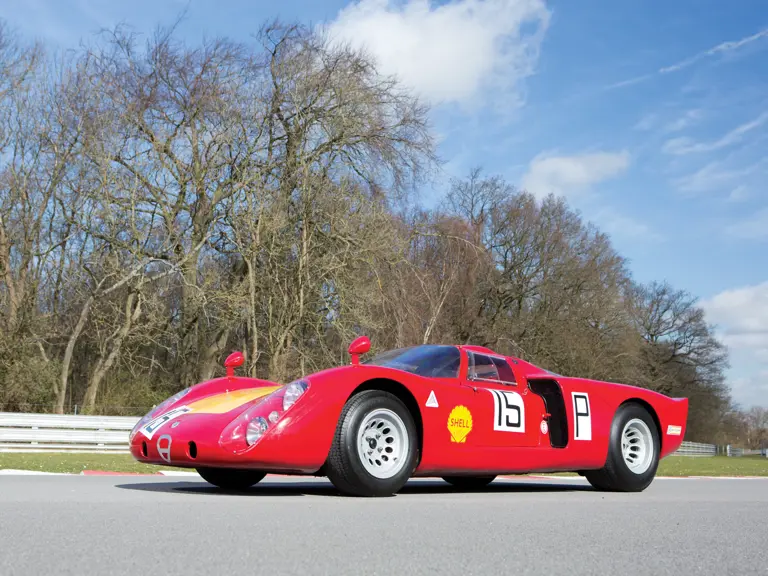
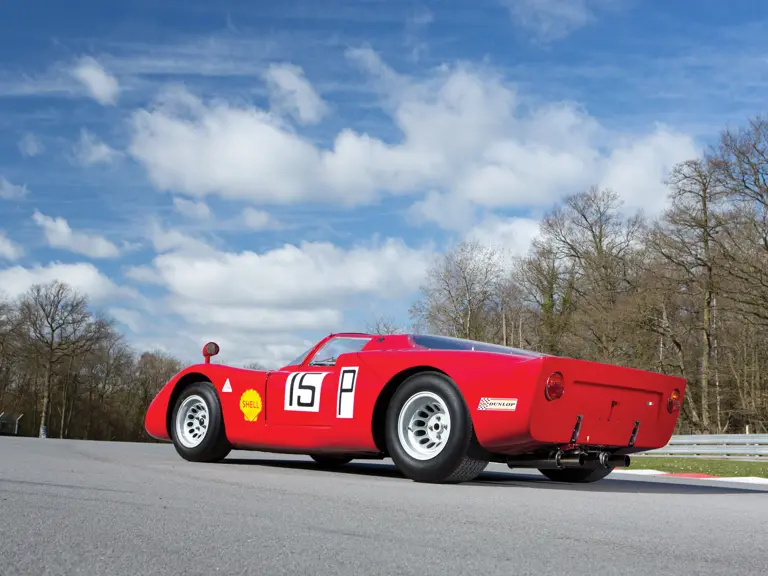
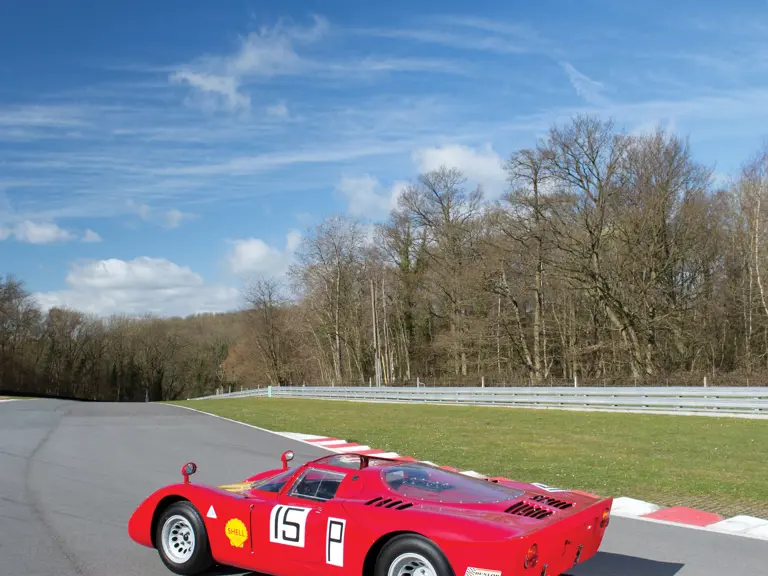

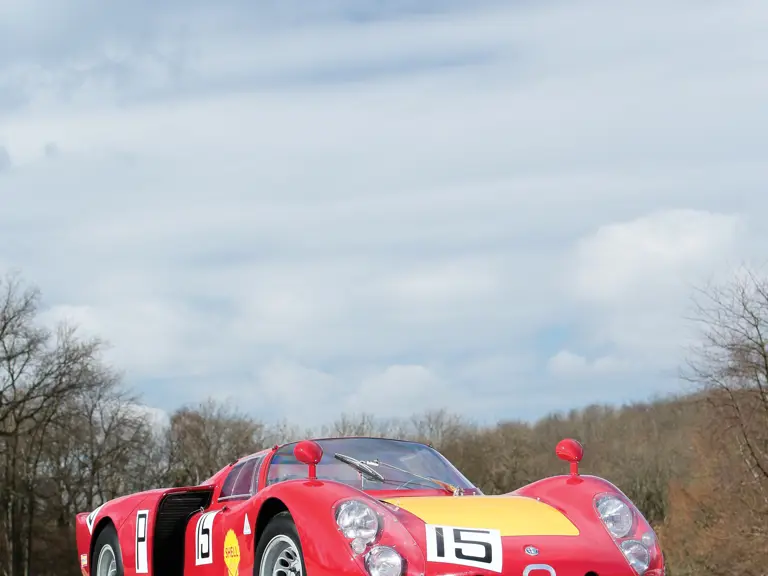
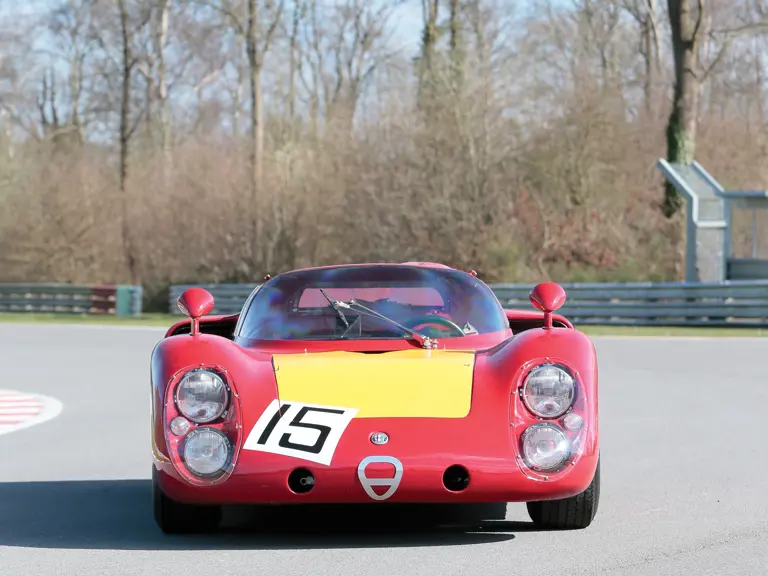
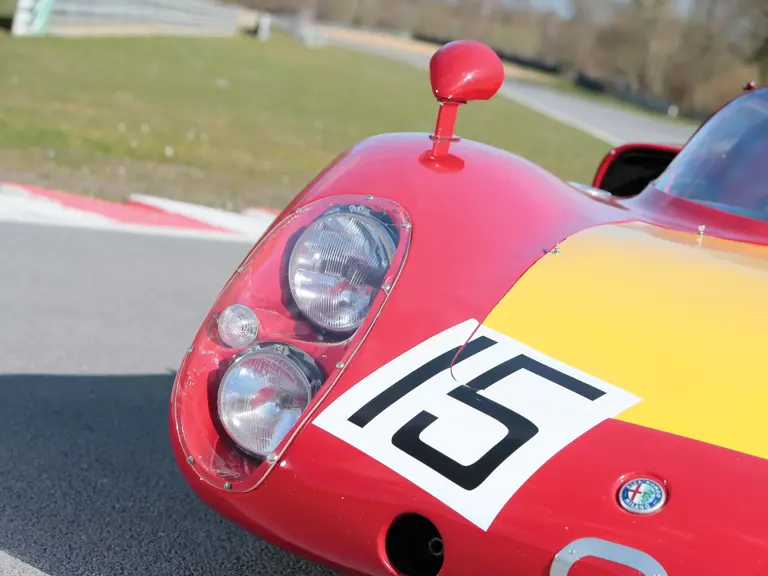
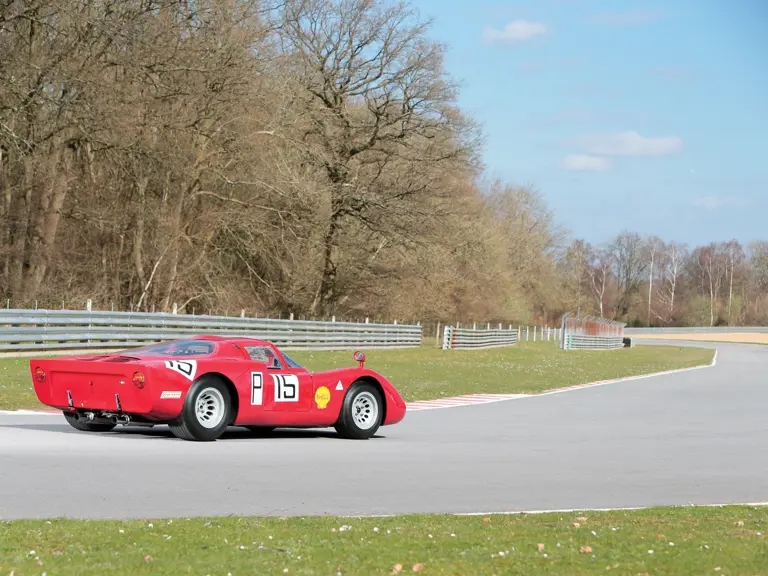
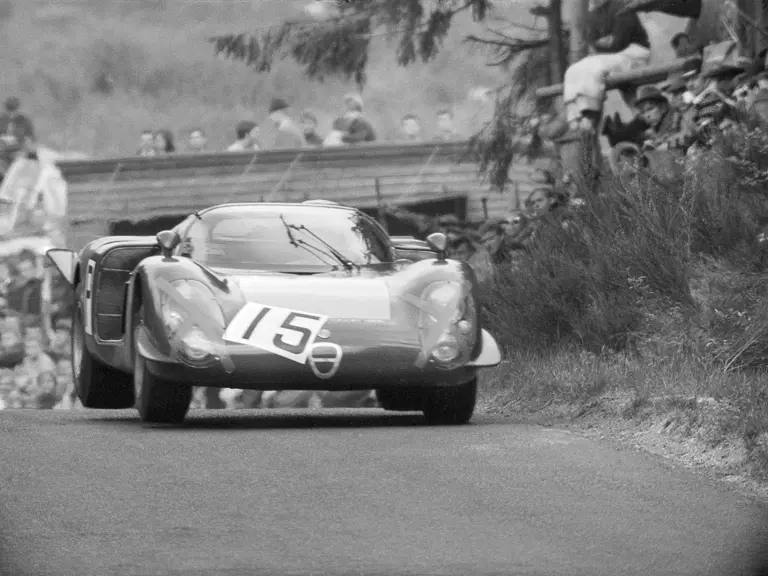
 | Monte Carlo, Monaco
| Monte Carlo, Monaco
